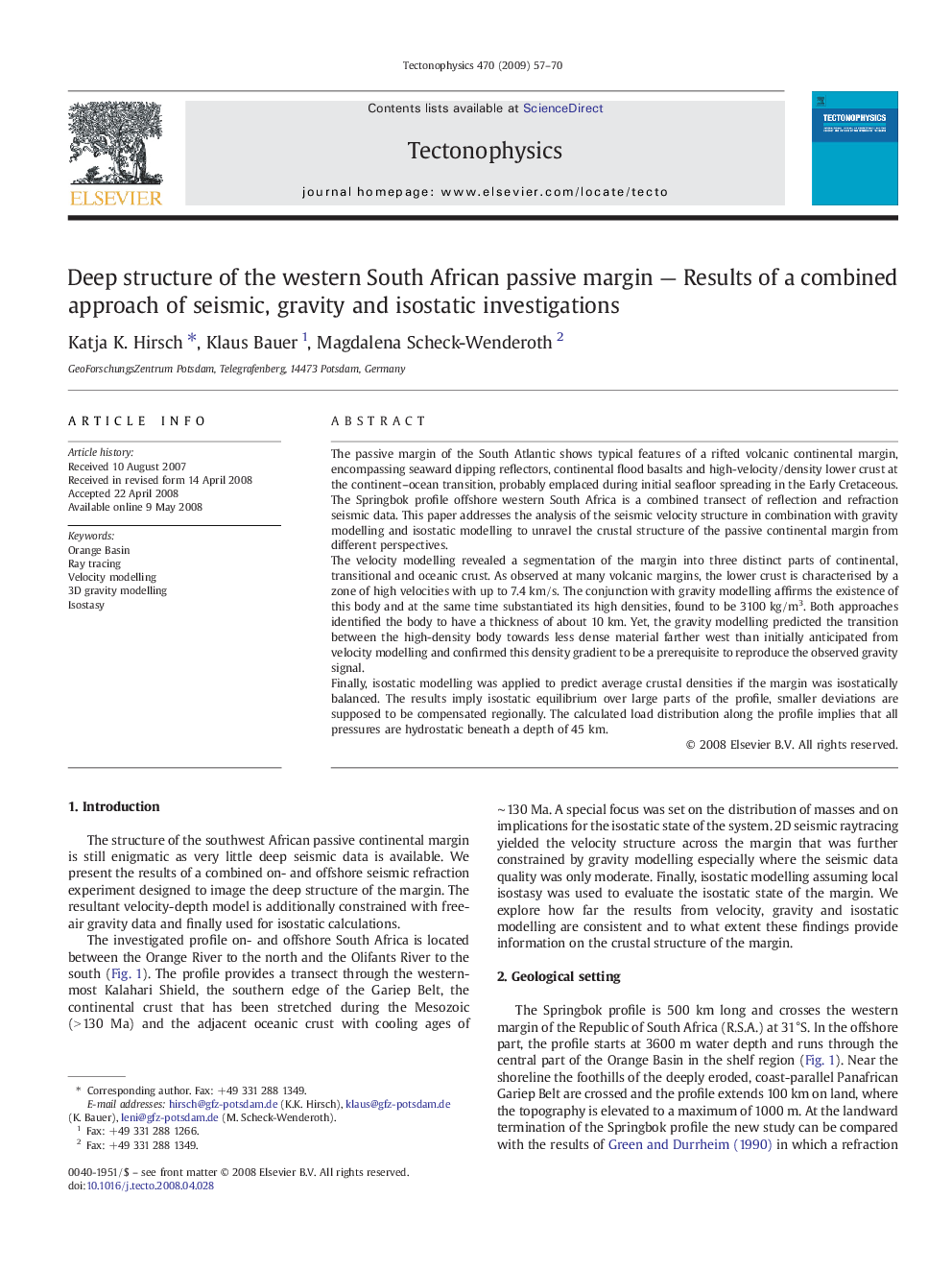| Article ID | Journal | Published Year | Pages | File Type |
|---|---|---|---|---|
| 4694209 | Tectonophysics | 2009 | 14 Pages |
The passive margin of the South Atlantic shows typical features of a rifted volcanic continental margin, encompassing seaward dipping reflectors, continental flood basalts and high-velocity/density lower crust at the continent–ocean transition, probably emplaced during initial seafloor spreading in the Early Cretaceous.The Springbok profile offshore western South Africa is a combined transect of reflection and refraction seismic data. This paper addresses the analysis of the seismic velocity structure in combination with gravity modelling and isostatic modelling to unravel the crustal structure of the passive continental margin from different perspectives.The velocity modelling revealed a segmentation of the margin into three distinct parts of continental, transitional and oceanic crust. As observed at many volcanic margins, the lower crust is characterised by a zone of high velocities with up to 7.4 km/s. The conjunction with gravity modelling affirms the existence of this body and at the same time substantiated its high densities, found to be 3100 kg/m3. Both approaches identified the body to have a thickness of about 10 km. Yet, the gravity modelling predicted the transition between the high-density body towards less dense material farther west than initially anticipated from velocity modelling and confirmed this density gradient to be a prerequisite to reproduce the observed gravity signal.Finally, isostatic modelling was applied to predict average crustal densities if the margin was isostatically balanced. The results imply isostatic equilibrium over large parts of the profile, smaller deviations are supposed to be compensated regionally. The calculated load distribution along the profile implies that all pressures are hydrostatic beneath a depth of 45 km.
